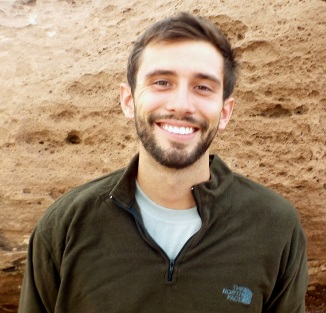The applied math featured here tends to be fairly sophisticated, but there’s a lot you can do with the basics as we’ll see in the following interview with Trevor Dawson of Borrego Solar, a company specializing in grid-connected solar PV systems.

JC: Can you say a little about yourself?
TD: I’m Trevor Dawson, I’m 25, born in the California Bay Area. I enjoy wood working, ceramics, soccer and travelling. I consider myself an environmentalist.
JC: What is your role at Borrego Solar?
TD: I am a Cost Reduction Analyst and I focus on applying Lean principles to identify and remove waste from both our internal processes and construction in the field. I use data to identify problems, prioritize them, and to verify the effectiveness of our solutions. I work with a variety of teams to reduce the cost or time of our projects.
Solar is a very fast-paced industry. Policy changes and technological improvements are being developed quickly and we have to respond quickly. A key function of my job is to assign measurable cost benefits to new practices and help ensure Borrego Solar continues to be an industry leader.
JC: What is your technical background and education?
TD: I graduated with a Bachelors of Science in Industrial & Systems Engineering (IE) from the University of Washington. I spent 3.5 years as an IE implementing process improvements on Boeing’s 777 Manufacturing Wing Line in Seattle, WA. I gained valuable experience in Lean, schedule optimization, design of experiments, and big data efforts. At Borrego, I get to apply those skills to help accelerate the adoption of the most time-tested, renewable energy source of all: the sun.
JC: What math, physics, or technical skills do you use every day?
TD: Addition, algebra, and simple statistics. I like to think I’ve mastered the basics. I also use a lot of my industrial engineering training to help gather and analyze data like design of experiments, time studies, and lean problem solving methodology.
I mostly work in Excel and use Power Pivot to drive large, cumbersome data into neat summary tables. Although the analysis can be a challenge, the hard work is rolling it up and presenting it in a way that is meaningful and convincing. When you’re suggesting a business decision, especially when it challenges the norm, your internal customers want to know the answer but they are equally interested in your process. For example, how does the business case change if a defined constraint or coefficient changes? The solar industry is dynamic and still maturing, so we have to be especially poised in our decision-making.
JC: What do you use much less than you expected?
TD: Calculus. I spent so much time learning calculus and even other things like differential equations but haven’t had much opportunity to apply them. However, I do think calculus taught me important practical problem solving skills and I put that to use now tackling large problems that span multiple pages.
JC: What math or technical skill do you wish you had more of or understood better?
TD: Excel programming and design. Excel rules the world, and although I was introduced to it at school, I think more intense courses should be commonplace. Regarding design, execution is the hardest part of any business decision, and design would help communicate results and suggestions much more effectively. A business needs verifiable proof that the suggested change is real and if executed will perform as predicted. This stage of verifying the effectiveness of a project could be improved with better design skills and may even reduce the amount of touch time and communications all the way through from inception to completion of a project.
JC: Anything else you’d like us to know?
TD: Go solar!
